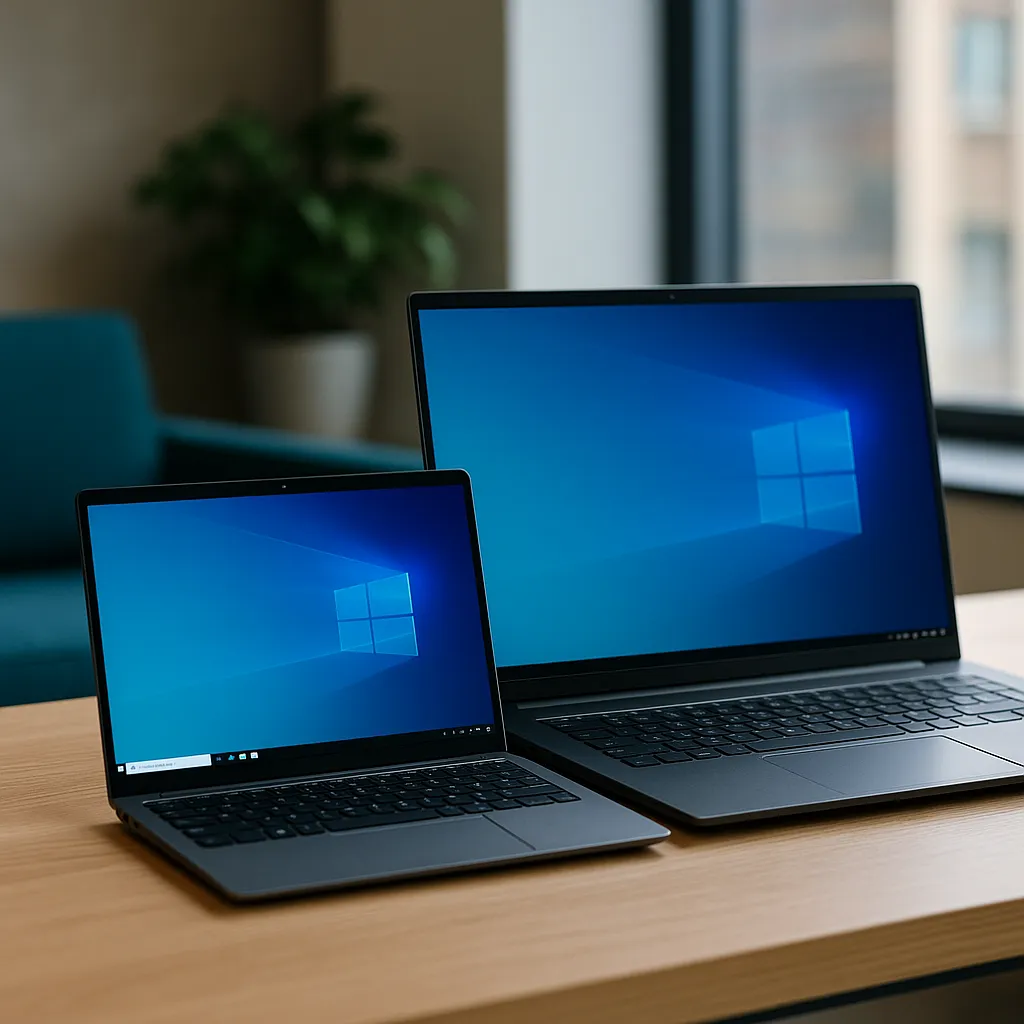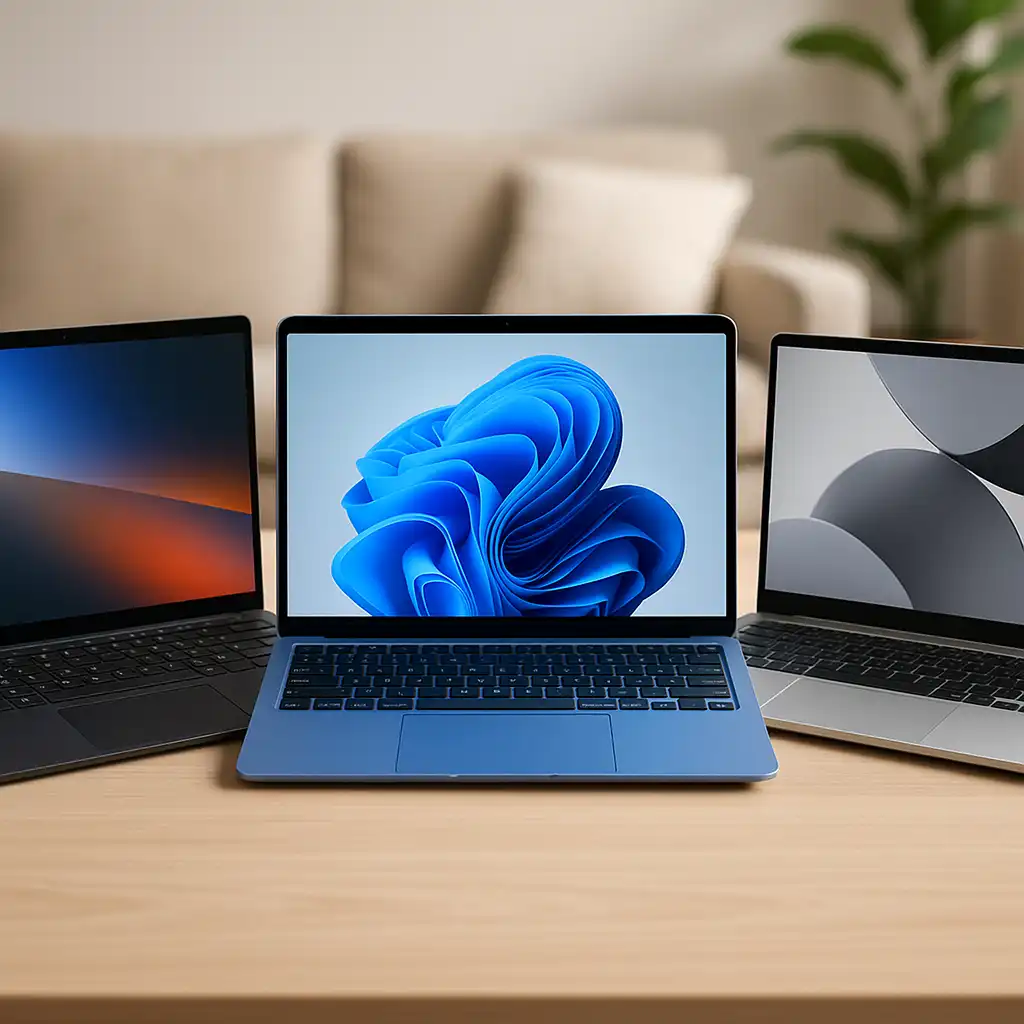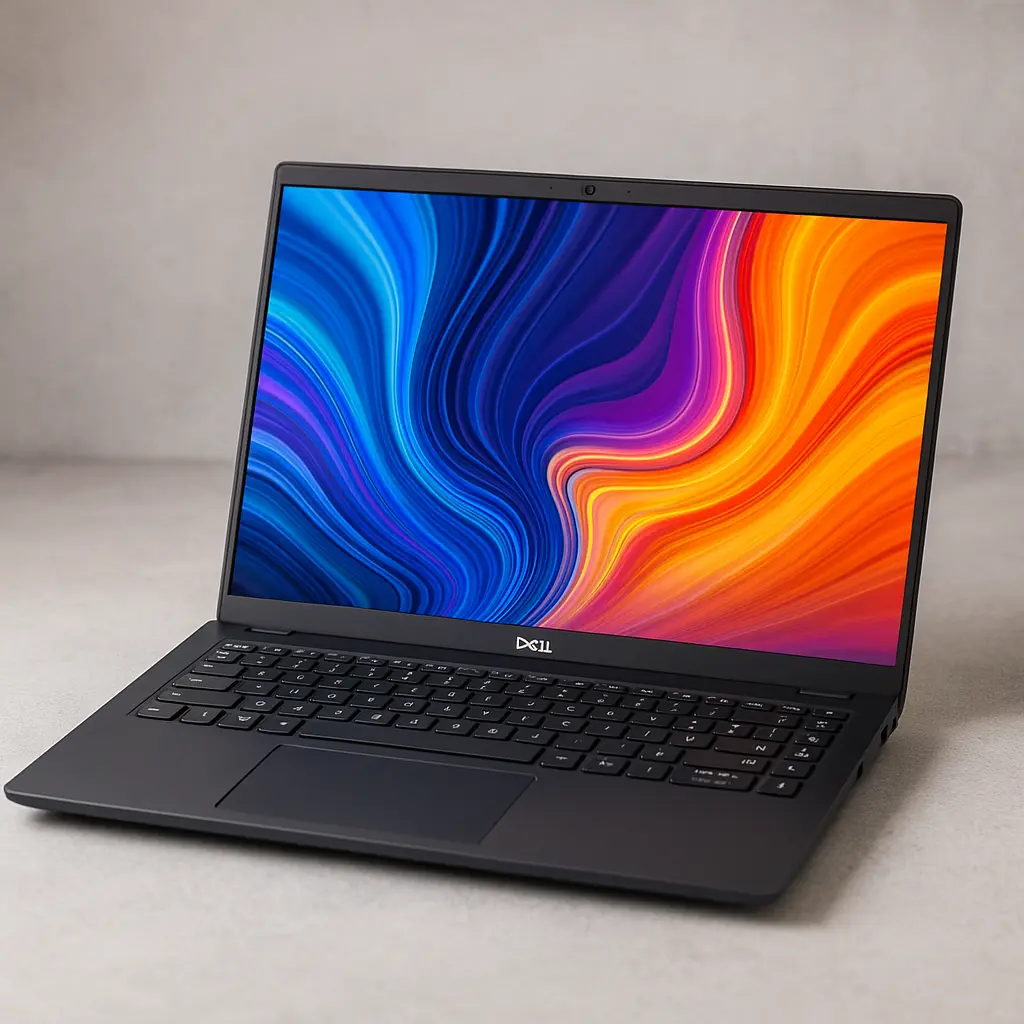Small Laptop vs Big Laptop: Workflow, Portability, and Performance Needs
Disclosure: This post contains affiliate links. LaptopVoyager.com participates in the Amazon Associates Program and may earn commissions on qualifying purchases, at no extra cost to you.
Laptop size can have a big impact on how you work, travel, and use your device day to day. Small laptops, usually in the 13 to 14-inch range, are designed for portability and convenience. Big laptops, typically 16 to 17 inches, offer larger screens and roomier interiors for better performance and airflow.
If you’re deciding between the two, it helps to look at how each size plays out in real-life use—not just on a spec sheet.
Portability and Everyday Use
Smaller laptops are the go-to choice for people who move around a lot. Whether you’re a student, remote worker, or frequent traveler, these lightweight models make packing and commuting easier. Most weigh under 3.5 pounds and fit easily in a standard backpack.
Many users say they love how these laptops strike a good balance between usability and mobility. They’re great for tasks like emails, documents, web browsing, and video calls on the go.
Larger laptops aren’t as travel-friendly. A 17-inch model can feel heavy and awkward to carry, especially if you’re navigating tight spaces or relying on small work surfaces. But if your setup is mostly stationary—like a home desk or office—they offer a roomier, more immersive experience.
Multitasking and Screen Space
Big laptops really stand out when it comes to screen real estate. The extra inches make a difference for multitasking. It’s easier to split the screen between apps, compare documents side by side, or keep a Zoom call open while taking notes.
Smaller laptops still support multitasking, especially if they have high-resolution displays. But with limited space, it’s harder to manage multiple windows without frequent tab switching. For more demanding workflows, the compact display can feel restrictive.
Performance and Heat Management
Larger laptops tend to perform better during extended tasks. According to verified reviews and product listings, they usually have better cooling systems and more powerful components. The added space allows for bigger fans, heat sinks, and better airflow, which helps keep performance consistent.
Smaller laptops are built for quiet efficiency, but they can heat up faster under pressure. When that happens, some models throttle performance to keep temperatures down. That’s something to consider if you’re doing video editing, gaming, or anything that pushes the processor for long periods.
Value and Long-Term Use
You might expect smaller laptops to cost less, but that’s not always the case. Many thin-and-light models use premium materials and efficient components that bump up the price. In these cases, you’re paying for portability and design rather than raw power.
Big laptops often give you more hardware for the same price. You might get a faster processor, more storage, or even a dedicated graphics card—features that help with future-proofing. If you want performance that lasts a few years without needing upgrades, a larger laptop might be the better investment.
Conclusion
Choosing between a small or big laptop comes down to how you’ll use it. Small laptops are ideal for people on the move who need something compact and reliable for everyday tasks. They’re great for students, freelancers, and frequent travelers.
Big laptops work better for users who value screen space, stronger performance, and don’t mind the added weight. They’re a good fit for creative professionals, gamers, and anyone using demanding software.
Each size has its strengths. Think about your daily routine, your workspace, and what kind of tasks you tackle most. That’ll help you pick the one that fits your workflow best.







